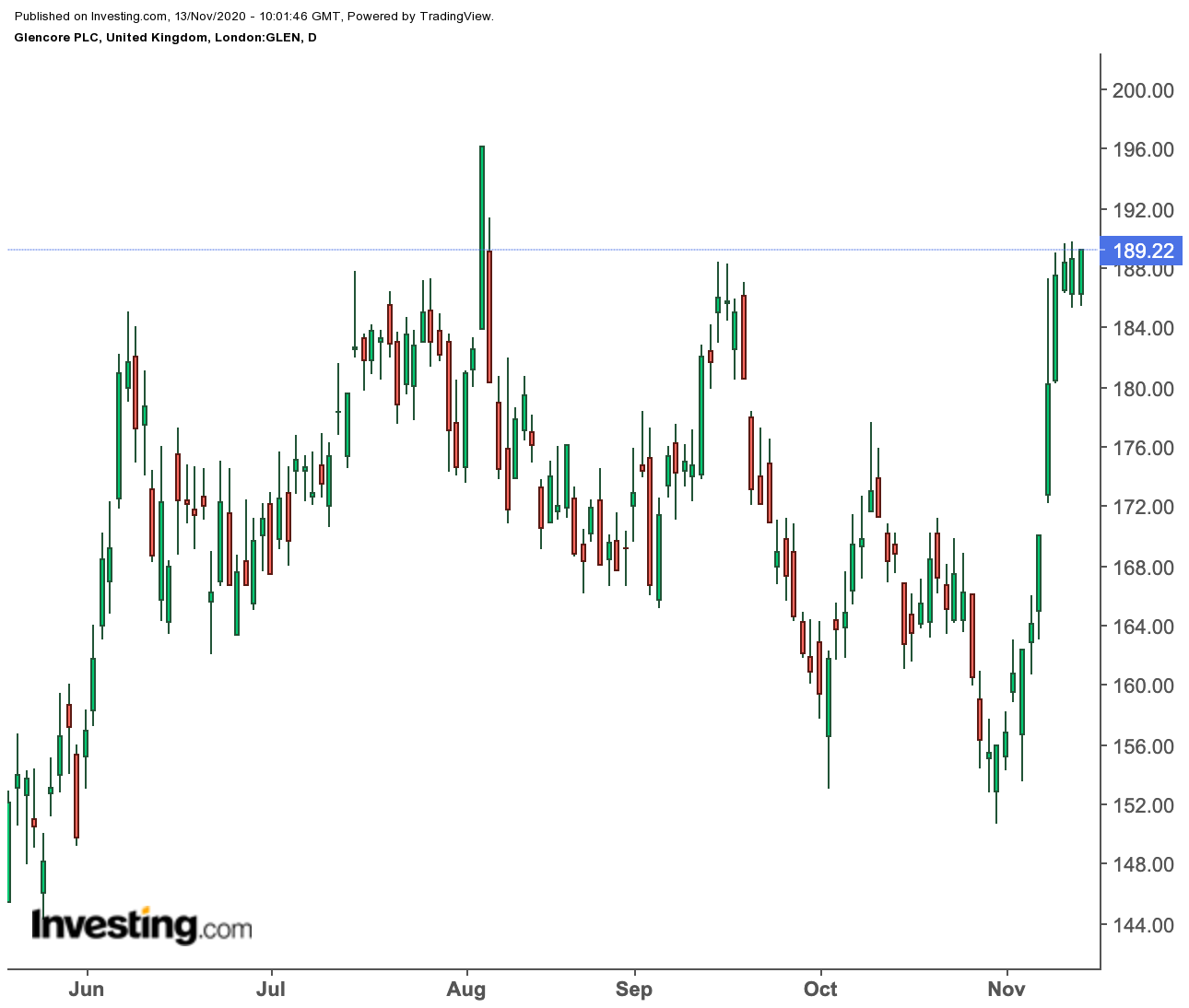November has so far been a good month for investors in a number of stocks both in US and UK markets, including commodity trading and mining giant Glencore (LON:GLEN) (OTC:GLNCY). So far in the month, the shares are up over 20%.

Therefore we will take a closer look at whether GLEN shares deserve to be in long-term portfolios and introduce several other names that may pique investors' interests.
Glencore
Switzerland-headquartered FTSE 100 member, Glencore is regarded as a giant in the commodities sector. Its history goes to the 1970s and it employs around 160,000 worldwide in over 35 countries.
Glencore's 150 mining and metallurgical sites, as well as oil production assets, make up most of the operations.
Metals and minerals assets include copper, cobalt, nickel, zinc and lead, ferroalloys, aluminum, iron ore, gold and silver.
Thermal coal, crude oil, oil products and natural gas are among the energy products.
Glencore's marketing activities differentiate the group from producers. In other words, it physically sources commodities from other suppliers and sells to global customers.
Despite a strong month so far, year-to-date (YTD), GLEN stock is down about 21%. On Nov. 12, the stock closed at 188.58p ($4.88 for US-based stock).
Despite the decline in 2020, we must note that the shares have had a strong comeback since the lows hit in March.
The reason for this drop was mostly the pandemic, which meant a pause in some mining operations during various lockdowns. The company also incurred high storage costs for energy products.
In early August, the group released its half-year report. CEO Ivan Glasenberg said:
"we are pleased to announce an overall strong financial performance from our various businesses, reflecting the countercyclical earnings power from our large scale Marketing activities, combined with a cash generative industrial asset base, which quickly adapted to the changed environment."
Despite his optimism, net loss was $2.6 billion. A year ago, it reported a gain of $226 million. Management also canceled the interim-dividend as it wants to reduce its debt.
We believe GLEN stock offers an acceptable margin of safety for long-term investors. In other words, most of the bad news has already been factored into the price.
Forward P/E, P/S, and P/B ratios stand at 11.68, 0.19, and 0.92, respectively. Therefore, we'd look to buy the dips.
Bottom Line
Those investors who are not ready to commit capital into the commodity giant may also consider exchange-traded funds (ETFs) that also have Glencore as a holding. As most of these funds offer juicy dividend payments, they could appeal to passive income seekers, too.
Examples of such funds include:
- FlexShares Morningstar Global Upstream Natural Resources Index Fund (NYSE:GUNR)—down 11.6% YTD; dividend yield 4.1%;
- Global X Copper Miners ETF (NYSE:COPX)—up 16.8% YTD; dividend yield 0.5%;
- iShares Global Materials ETF (NYSE:MXI)—up 9.67% YTD; dividend yield 3.8%;
- iShares MSCI Global Metals & Mining Producers ETF (NYSE:PICK)—down 0.5% YTD; dividend yield 5.5%;
- SPDR S&P Global (NYSE:SPGI) Natural Resources ETF (NYSE:GNR)—down 12.3% YTD; dividend yield 3.6%;
These funds offer access to a range of both US and global companies, such as:
- UK-based miner Anglo American (LON:AAL), (OTC:NGLOY)—down 5.2% YTD; dividend yield 2.7%;
- Australia-headquartered global resources group BHP Billiton (ASX:BHP), (NYSE:BHP)—down 3.9% YTD; dividend yield 7.5%;
- Canada-based First Quantum Minerals (OTC:FQVLF)—up 19.8% YTD; dividend yield 0.06%;
- Phoenix, Arizona-headquartered Freeport-McMoRan (NYSE:FCX)— up 52.3% YTD;
- Canada-based Ivanhoe Mines (OTC:IVPAF)—up 33.9% YTD;
- UK-based industrial gases and engineering company Linde (NYSE:LIN) —up 20.4% YTD; dividend yield 1.5%;
- Greenwood Village, Colorado-based miner Newmont (NYSE:NEM)—up 50.3% YTD; dividend yield 2.4%;
- British-Australian mining and metals company Rio Tinto (NYSE:RIO)—up 5.3% YTD; dividend yield 8.6%;
- India-based natural resources group Vedanta (NYSE:VEDL)—down 34.7% YTD; dividend yield 12.9%.
